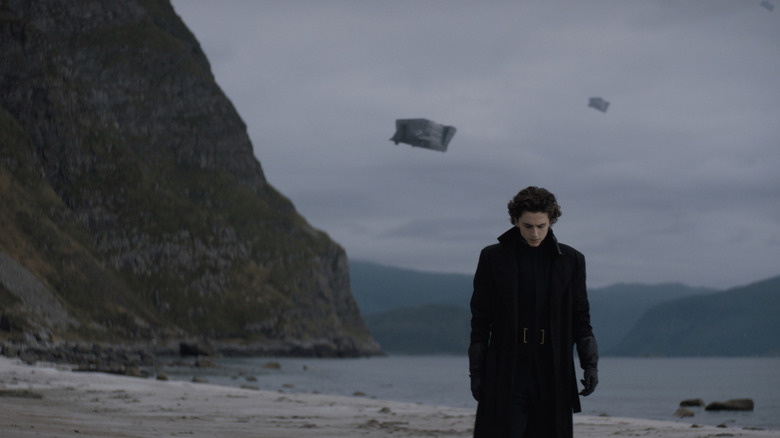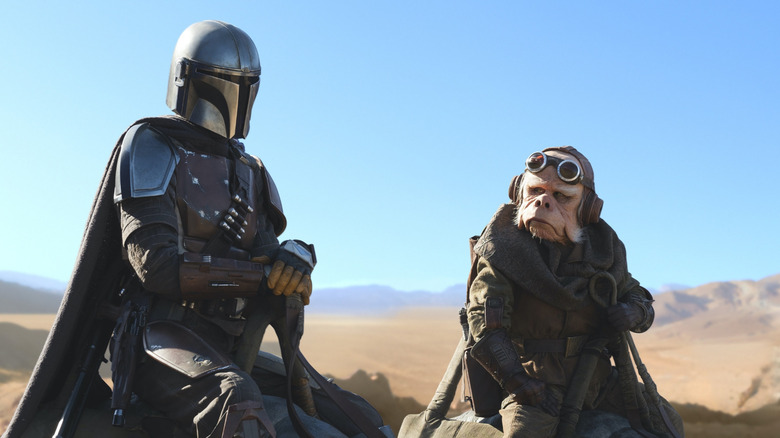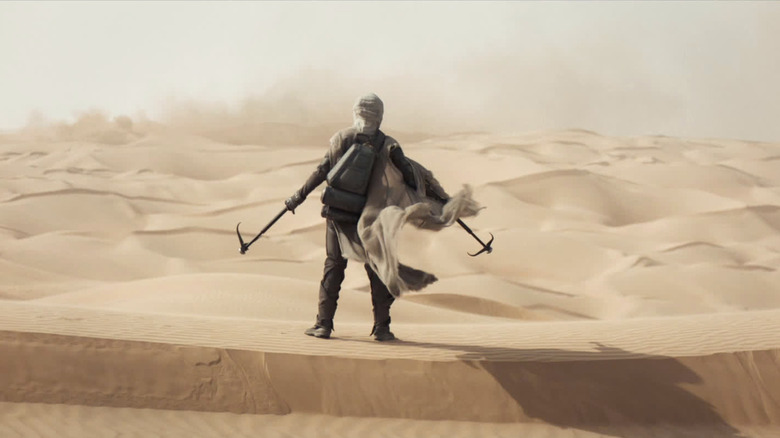Dune: Part 2's Production Could Look A Lot More Like The Mandalorian
Against all odds and projected failures, "Dune" made a huge splash in 2021, partially due to how gorgeous its scenery was. Thanks to folks like production designer Patrice Vermette and special effects supervisor Paul Lambert, the dreary and sand-filled worlds of Arrakis were brought to life in Denis Villeneuve's adaptation. Believe us: it's an overwhelming experience.
Cinematographer Greig Fraser was another important figure that helped bring "Dune" to life, securing his first Oscar for Best Cinematography in 2022 for the film. Using real locations for the movie's shooting, he was tasked to find the perfect balance between making Arrakis and Caladan feel never-ending and claustrophobic at the same time, a feeling that haunts the doomed Paul (Timothée Chalamet) throughout the film. Needless to say, Fraser succeeded.
However, there could be a big change coming to the cinematography of its sequel, currently called "Dune: Part Two." It is not confirmed whether or not Fraser will return to the camera, but his influence will certainly be present in more ways than one. This includes a revolutionary piece of technology used for Disney's "The Mandalorian" that he helped to create.
This is the way
In an interview with IBC, Fraser discussed the technologies he and the rest of the "Dune" crew used to shoot the film. These included the several IMAX cameras with the format's 1.43:1 ratio that was used to convey Paul's state of mind. However, its on-location shoots in Hungary and Norway involved shooting at very specific times of the day.
"Patrice and Denis had their minds set on real locations," Fraser told IBC, "real dusk, dawn, real sets as much as we can."
It's unclear whether they will still do these shoots when "Dune: Part Two" enters the filming stage, but Fraser teased the implementation of photorealistic LED soundstages in order to achieve similar effects without the time constraint. This type of soundstage was introduced with the premiere of "The Mandalorian" in 2019 and involved massive LED screens stretching from the floor to the ceiling, encircling a platform for actors to act on.
"I developed the Mandalorian technology for [season 1] and departed as per my contract after shooting three episodes," explained Fraser. "The reality was that at that time the tech was still in its infancy. It was just ready for primetime but it wasn't widely available. Now we might make a different decision."
This is only the beginning
The idea of using a soundstage like the ones used throughout "The Mandalorian" for something on the scale of "Dune" could be revolutionary. During the interview, Fraser mused about the potential for these soundstages to make scenes have more volume in the next film.
"For the next Dune, who knows, maybe if we can mix and match shooting volume with real-world scenarios, the whole system becomes even more powerful," he explained, calling volume in cinematography "all or nothing" in his eyes.
This could be an interesting development that could make for some major visual and narrative changes; after all, the first "Dune's" cinematography often highlighted the expansive terrain of Arrakis and the winding hallways of Arrakeen, mirroring Paul's naivety about the world. Now that he has learned his destiny, as seen throughout the first movie, adding more volume to his surroundings could signal a more focused worldly perception on his part. Unfortunately, as we'll eventually see, this perception of the world that Paul fosters is one built on conquest and genocide.
However, the implementation of this technology for "Dune: Part Two" has yet to be confirmed. The sequel is currently in pre-production, with Christopher Walken, Florence Pugh, and Austin Butler joining the returning cast.


